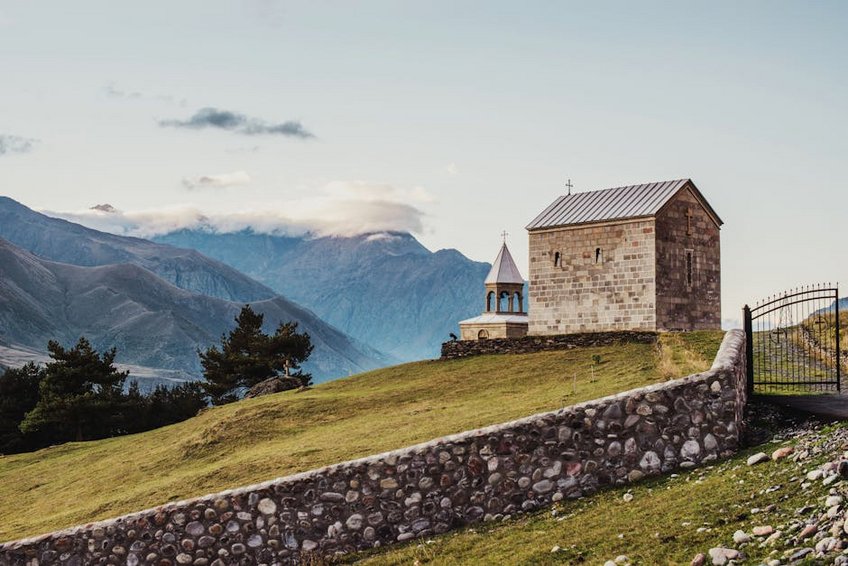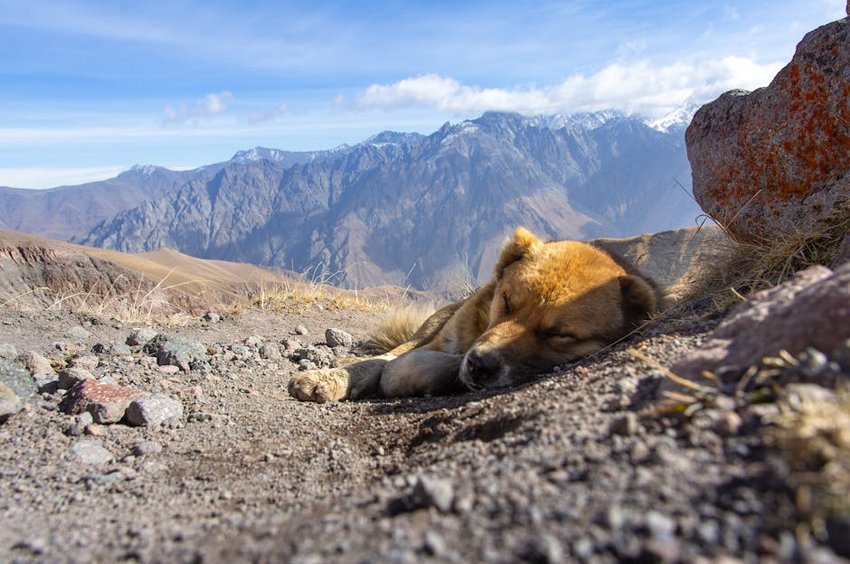Georgia Kazbegi Mountains Trekking
Georgia Kazbegi Mountains trekking delivers dramatic alpine scenery across the Greater Caucasus range with elevations reaching 16,512 feet. Your adventure combines glacier views, traditional villages, and the iconic Gergeti Trinity Church perched at 7,119 feet above sea level. This guide covers route planning, seasonal timing, and cultural immersion for an unforgettable hiking experience in one of Europe’s most stunning mountain regions.
Essential Trekking Information
Kazbegi National Park spans 3,500 square miles within Georgia’s Mtskheta-Mtianeti region bordering Russia. The area features volcanic peaks, deep valleys, and ancient glaciers formed over millennia. Trekking routes range from moderate day hikes to challenging multi-day expeditions across varied terrain.
Stepantsminda serves as the primary gateway town at 5,740 feet elevation with essential services. Local guides recommend acclimatization days due to rapid altitude changes between 4,000-14,000 feet. The region maintains rich cultural traditions from the historic Georgian Military Road trading route.
Geography and Climate Basics
Understanding the landscape ensures proper preparation for Caucasus mountain adventures.
- The Kazbegi volcanic massif dominates with Mount Kazbek at 16,512 feet, featuring permanent glaciers and steep ridges requiring technical gear above 11,000 feet.
- Alpine zones transition between forested valleys at 4,000 feet to barren rock above 9,800 feet, creating microclimates with sudden weather changes.
- River systems like the Terek create deep gorges while glacial runoff feeds waterfalls along popular hiking trails throughout the national park.
- Budget trekking costs $30-50 daily using shared guesthouses, self-catered meals, and group tours while saving on museum entries and local transport options.
- Mid-range hiking runs $80-120 daily featuring private rooms, restaurant meals, certified guides, and included equipment rental for glacier sections.
- Luxury expeditions exceed $200 daily with helicopter transfers, premium mountain huts, gourmet catering, and personal porters for multi-day routes.
- Georgia National Tourism Administration
- Lonely Planet Georgia Guide
Historical and Cultural Context
Kazbegi’s human history spans three millennia with Persian, Ottoman, and Russian influences. The Georgian Military Road constructed in the 1st century BC brought diverse cultures to these mountain communities. Local Svaneti traditions preserve unique tower architecture and polyphonic singing recognized by UNESCO.
Modern trekking infrastructure developed after Georgia’s independence in 1991, with improved trails and guesthouses appearing over the past decade. The region now welcomes 50,000 annual visitors while maintaining authentic highland hospitality customs. Conservation efforts protect endemic species like the Caucasian tur goat.
Trekking Difficulty Levels
Routes categorize into three difficulty tiers suitable for different experience levels. Beginner trails like Gergeti Trinity Church involve 4-6 hour hikes with 1,500 foot elevation gains. Intermediate routes to Gergeti Glacier require 6-8 hours crossing rocky terrain above 10,000 feet.
Advanced multi-day expeditions to Mount Kazbek base camp demand technical climbing skills and glacier travel experience. Guided tours provide necessary equipment for ice axes and crampons above 14,000 feet. All hikers should monitor weather forecasts closely when attempting high-altitude sections.

Alt: “kazbegi-mountains-glacier-valley-trekking-path”
Planning Your Georgia Kazbegi Mountains Trekking
Organizing your Caucasus hiking adventure requires attention to seasonal weather patterns and logistical details. Summer months from June through September offer the most reliable conditions for high-altitude routes. Early autumn provides colorful landscapes with fewer crowds but shorter daylight hours.
Budget approximately $40-80 daily for basic trekking including guesthouses and local guides. Mid-range options at $80-150 cover better accommodation and private transfers. Luxury expeditions exceeding $200 daily include helicopter tours and premium mountain huts.
Essential preparations involve obtaining trekking permits, arranging airport transfers, and packing layered clothing systems. Book accommodations three months ahead for July-August peak season. Confirm guide services speak English and hold proper certifications.
Best Time to Visit Kazbegi Mountains
Visit between late June and early September for optimal trekking conditions with minimal snow coverage. Daytime temperatures range from 60-75°F (15-24°C) at lower elevations, dropping to 40-55°F (4-13°C) above 10,000 feet. These months provide 12-14 hours of daylight for extended hiking.
Shoulder seasons in May and October offer solitude but require preparedness for sudden storms. Winter trekking from November to April demands specialized cold-weather gear and experienced guides. April sees wildflower blooms while September features golden larch forests.
Budget Planning and Costs
Your trekking budget varies significantly based on accommodation style and guide services.
Essential Preparation Checklist
Pack waterproof hiking boots, moisture-wicking layers, and a 4-season tent for overnight routes. Technical gear includes ice axes, crampons, and harnesses for glacier crossings above 11,000 feet. Navigation tools involve detailed topographical maps and GPS devices with offline capabilities.
Documentation requires valid passports, travel insurance covering high-altitude trekking, and Kazbegi National Park permits available in Stepantsminda. Health preparations involve altitude sickness medication and water purification systems. Book Tbilisi airport transfers two months ahead during peak season.
Top Attractions and Trekking Routes
Kazbegi’s trail network spans 150 miles across diverse landscapes from alpine meadows to glacial moraines. The most popular routes begin in Stepantsminda and radiate toward key natural landmarks. Day hikers enjoy well-marked paths while experienced trekkers venture into remote valleys.
Cultural highlights include medieval watchtowers, traditional bread baking demonstrations, and village wine cellars. Natural wonders feature panoramic viewpoints, mineral hot springs, and wildlife observation spots. Route difficulty increases significantly above tree line where weather changes rapidly.
Must-See Highlights
Gergeti Trinity Church dates to the 14th century perched dramatically at 7,119 feet with Kazbek peak backdrop. The 4-hour round trip from Stepantsminda gains 1,800 feet elevation through pasturelands. Visit early morning to avoid crowds and capture best photography light.
Gergeti Glacier viewpoint requires 6-8 hours hiking from town reaching 10,500 feet elevation. This intermediate trail crosses moraine fields with stunning ice formations. Truso Valley features colorful mineral deposits and abandoned villages along a moderate full-day route.
Juta Village serves as gateway to breathtaking Chaukhi Pass with striking rock formations resembling Dolomites. The area offers camping facilities and horse riding options beside pristine rivers. All attractions remain accessible from June through September with local guides recommended.
Hidden Gems and Local Favorites
Abano Pass connects Kazbegi with Tusheti region through remote high-altitude trails rarely visited by tourists. This challenging 3-day route reaches 9,800 feet with basic shepherd huts available seasonally. Local guides know safe river crossings and weather patterns.
Sno Valley contains ancient rock carvings and traditional Svaneti defensive towers off standard tourist routes. The area maintains authentic cultural practices with home-hosted meals available. These lesser-known spots provide deeper cultural immersion without crowds.
Popular Trekking Routes
The Kazbek Base Camp trek spans 4-6 days crossing glaciers and high passes above 14,000 feet. This advanced route requires technical climbing experience and certified guides. Accommodation involves basic huts or camping with all equipment provided.
Three Passes Circuit covers 35 miles over 4 days through varied ecosystems from forests to alpine zones. Moderate fitness levels handle this route with elevation gains around 2,500 feet daily. Spring water sources appear regularly along the trail.
Practical Travel Information
Georgia maintains good tourism infrastructure with English spoken in major hotels and tour companies. The local currency is Georgian Lari (GEL) though USD and Euros accepted in trekking agencies. Credit cards work in Stepantsminda but carry cash for mountain villages.
Mobile coverage exists in towns but disappears on remote trails where satellite communicators provide safety backup. Power outlets use European standard 220V with adapters needed for US devices. Internet access remains reliable in guesthouses though slower in high mountains.
| Accommodation Type | Features and Amenities | Price Range (USD) |
|---|---|---|
| Mountain Huts | Dormitory sleeping, basic meals, shared facilities | $15-30/night |
| Guesthouses | Private rooms, home-cooked meals, family hospitality | $25-50/night |
| Hotels | Ensuite bathrooms, restaurant, luggage storage | $60-120/night |
| Camping | Designated areas, water access, fire permits | $5-15/night |


